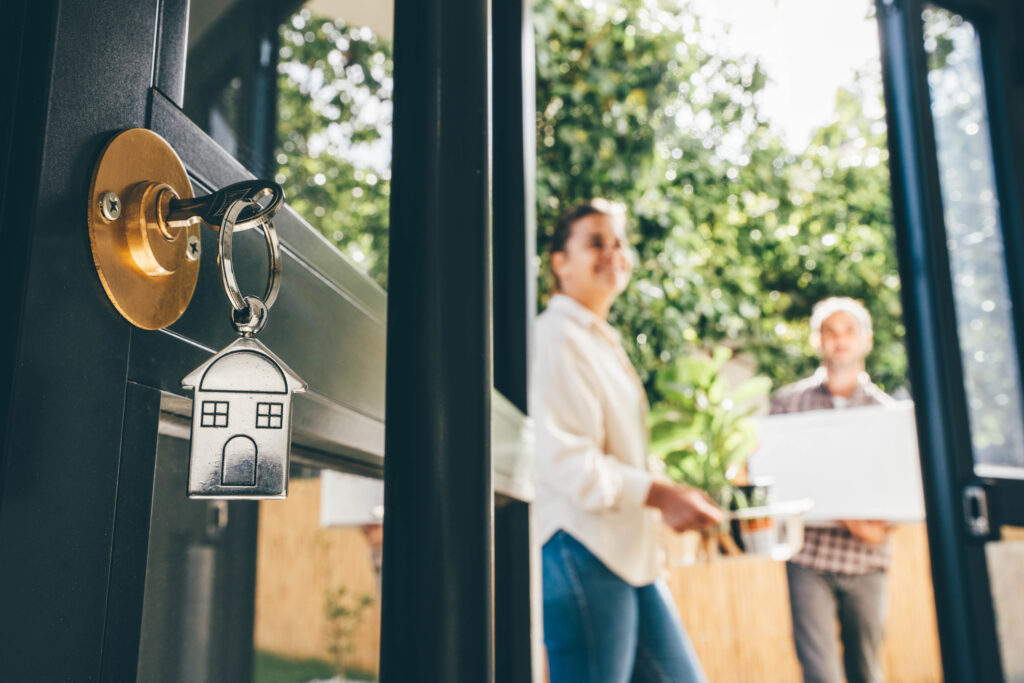First home buyers wanting to pick up a bargain may be kicking themselves that they didn’t jump into the property market earlier.
While the market certainly looks harder than ever to get into for a first home buyer in Australia, the good news is that as of July 1, the Home Guarantee Scheme (HGS), which allows eligible participants to buy a home with as little as a 2 per cent deposit and avoid lender’s mortgage insurance, opened up an extra 50,000 spots for the 2023-24 financial year.
So if you’re wondering how much deposit you need for a first home buyer in Australia, that figure potentially could be a lot lower than you imagined.
Under the scheme, the federal government effectively acts as a guarantor for the home loan of eligible participants. No lender’s mortgage insurance is required as the government is guaranteeing your loan.
The Home Guarantee Scheme includes:
• The First Home Guarantee (FHBG) – supports eligible home buyers to buy a home sooner, with a deposit as little as 5 per cent. For the 2023-24 financial year, 35,000 places are available.
• The Regional First Home Buyer Guarantee (RFHBG) – supports eligible regional first home buyers to buy a home in a regional area, with a deposit as little as 5 per cent. For the 2023-24 financial year, 10,000 places are available.
• The Family Home Guarantee (FHG) – supports eligible single parents with at least one dependent child to buy a home, with a deposit as little as 2 per cent. For the 2023-24 financial year, 5000 places are available.
Who is eligible for the First Home Guarantee Scheme in Australia?
From July 1 this year, friends, siblings and other family members will be eligible for joint applications under the First Home Guarantee and the Regional First Home Buyer Guarantee. These guarantees had previously been restricted to people that were married or in a de facto relationship, in addition to single applicants.
The guarantees have also been expanded to non-first home buyers who haven’t owned a property in Australia in the last 10 years. This will support those who have fallen out of home ownership, often due to financial crisis or relationship breakdown.
Home buyers must meet certain eligibility criteria for the HGS, and these differ slightly for each of the guarantees.
Maximum purchase prices (property price caps set by government legislation) are applicable for eligible properties purchased under the Home Guarantee Scheme.

Income eligibility thresholds also apply. For example, singles cannot have earned more than $125,000 taxable income in the last financial year. Couples can have combined earnings of no more than $200,000 taxable income in the last financial year.
As many as 33 participating lenders offer the Home Guarantee Scheme to home buyers. Of the big four banks, the Commonwealth Bank, NAB and Westpac participate. It’s worth noting that the cheapest home loans under the HGS are coming from the smaller participants.
What are the cons to the First Home Guarantee Scheme?
Buying with a 5 per cent deposit gets you into the market sooner, beating potential price rises. It also means you can stop paying rent and start building wealth through property.
There are drawbacks, though. A very small deposit means taking out a bigger loan, and paying more in monthly repayments than if you had a larger deposit. This could leave you thinly stretched if interest rates rise further.
Plus, a wafer-thin deposit leaves home buyers exposed to property market downturns. This can lead to ‘negative equity’, where the value of the loan exceeds the value of the home. The only solution can be to keep slogging away at the mortgage until the market picks up and values begin rising again.
What are the best suburbs for first home buyers?
A property report from Canstar and Hotspotting, The Bright Starters Report, identifies the most affordable and promising locations for home buyers and investors to purchase property in 2023.
These suburbs are identified as being affordable with price growth prospects and lifestyle benefits appealing to buyers. The five key metrics used to determine the rankings included sales volumes, quarterly price growth, vacancy rates, infrastructure and proximity to work and amenities.
As many as 90 suburbs out of the 110 top locations in Canstar’s new Bright Starters Report have a median property price below $600,000 and 39 are under $400,000, proving it is possible to buy in desirable regional and capital city markets with a smaller budget.
In fact, 108 of the property locations have a median property price that falls below the Home Guarantee Scheme’s price caps.

Here are some of the suburb picks that fall under HGS price caps:
Brisbane
Price Cap $700,000
Annerley (U) $465,000
East Brisbane (U) $515,000
West End (U) $580,000
Sydney
Price Cap $900,000
Mascot (U) $850,000
Rooty Hill $850,000
Stanmore (U) $820,000
ACT
Price Cap $750,000
Belconnen $595,000
Bruce (U) $460,000
Charnwood $715,000
Melbourne
Price Cap $800,000
Epping $680,000
Richmond (U) $640,000
Sunbury $650,000
Hobart
Price Cap $600,000
Bridgewater $485,000
Risdon Vale $460,000
Rokeby $540,000
Adelaide
Price Cap $600,000
Elizabeth Vale $390,000
Morphett Vale $505,000
Rosewater $525,000
Perth
Price Cap $600,000
Armadale $300,000
Cannington $435,000
Midland $360,000
Darwin
Price Cap $600,000
Darwin City (U) $445,000
Larrakeyah (U) $420,000
Woodroffe $440,000
What is the average price for a first home buyer in Australia?
CoreLogic data up to June 2023 shows housing values moved through a fourth month of recovery. Every capital city except Hobart (-0.3 per cent) saw dwelling values rise in June, with Sydney leading the way (no surprises there)!
Having said that, though, growth is slowing as CoreLogic data reveals that the market remains -6 per cent below peak levels recorded in April 2022. That’s the equivalent of the median dwelling value still being -$45,771 below a peak of $768,777.
To buy the median-priced house in Sydney and avoid lender’s mortgage insurance (that’s an insurance that protects the lender, not you, and is required if your deposit is less than 20 per cent of the purchase price) you’d need a hefty deposit of around $265,000.
Even if you buy into an entry level home, Domain data shows it takes an average first home buyer couple more than five years to build up a deposit.
Of course, you could jump in earlier but the cost of lender’s mortgage insurance often prohibits many borrowers from buying with a smaller deposit.
Let’s say, for example, that you have your eye on a home worth $700,000. You have $35,000 saved (5 per cent deposit). Lender’s mortgage insurance would cost you $28,000.
So, it’s not all doom and gloom – there are ways to enter the property market. You do need to assess your individual situation and work out whether or not the First Home Guarantee Scheme is the best option for you.




